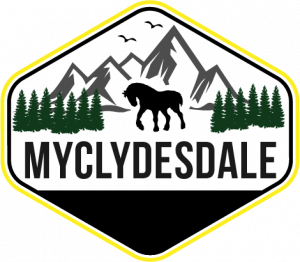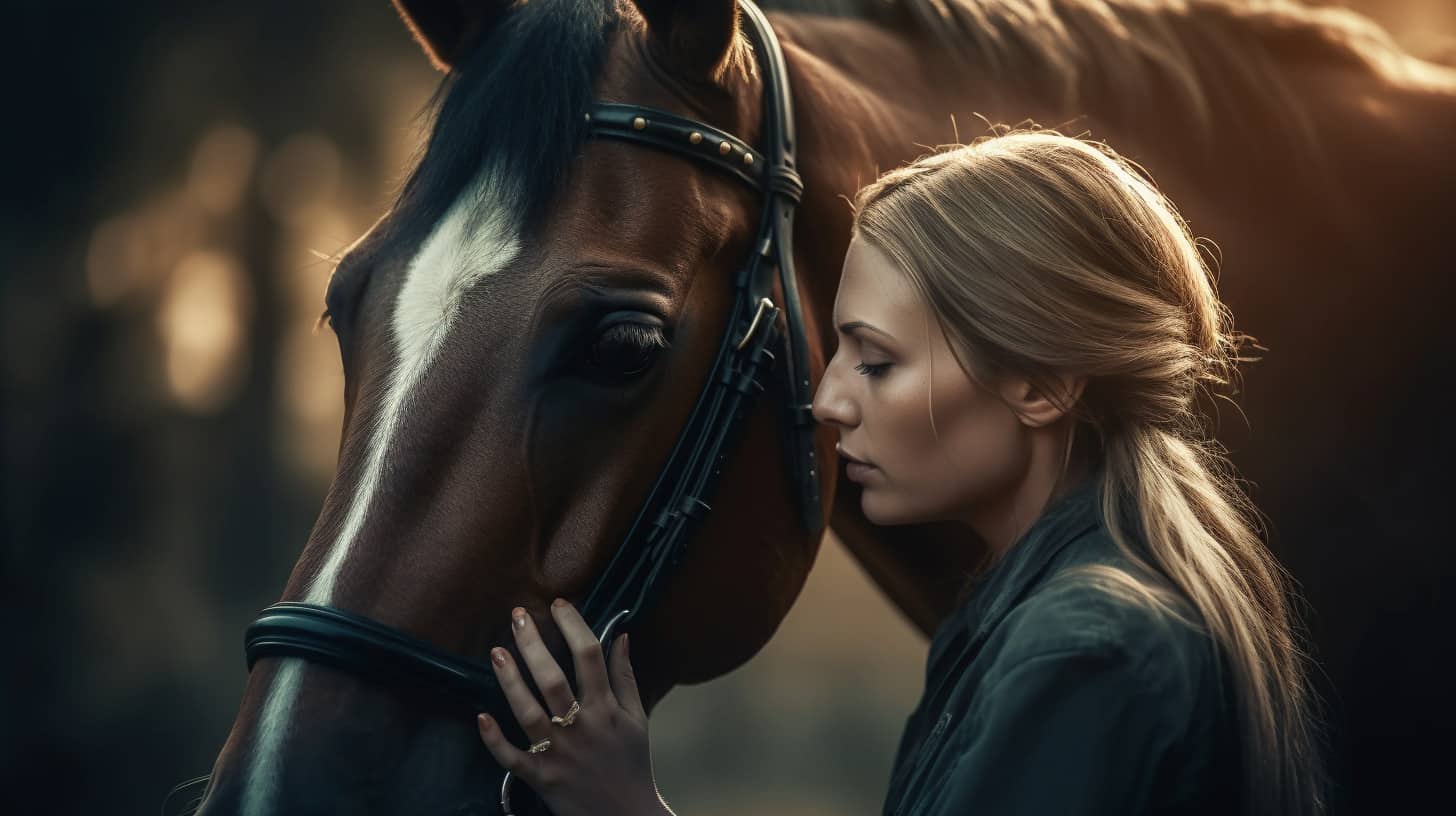Introduction
Horseback riding is an exhilarating activity that has captivated individuals for centuries. It involves sitting astride a saddle on the back of a horse and learning to navigate and communicate with these majestic creatures. The bond between horse and rider is unlike any other, and embarking on this equestrian journey can be rewarding and fulfilling. So sit back and relax. Learn how to ride a horse.
What is horseback riding?
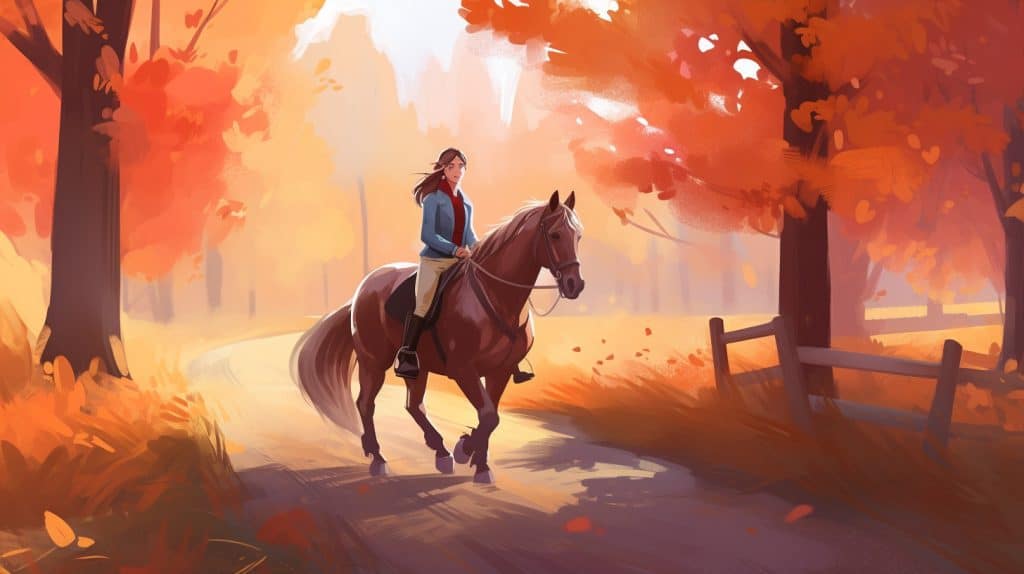
Horseback riding, also known as equestrianism, is the art of riding and controlling a horse. It encompasses a range of activities, including leisurely trail riding, competitive horse shows, and even therapeutic horseback riding programs. It is a highly versatile activity that caters to all ages and skill levels.
Why learn how to ride a horse?
Learning how to ride a horse extends beyond mere enjoyment; it offers a multitude of benefits. Riding not only improves physical fitness through balance, coordination, and muscle development but also promotes mental well-being by reducing stress and boosting confidence. Additionally, horseback riding provides a profound sense of connection with nature and animals.
Benefits of horseback riding for beginners
For beginners, horseback riding can be an enlightening journey filled with numerous advantages. Firstly, it promotes personal growth, fostering discipline, patience, and responsibility. Secondly, it encourages active outdoor engagement, allowing individuals to explore and appreciate the natural world. Lastly, horseback riding provides a supportive community and opportunities for lifelong friendships with like-minded individuals.
Getting Started: Horseback Riding Essentials
Before taking your first ride, it’s crucial to gather the necessary gear and find a reputable riding school that suits your needs.
A. Choosing the Right Gear
To ensure a safe and comfortable ride, beginners must have the appropriate riding equipment. This includes:
- A well-fitted helmet: Protecting your head from potential injuries is of utmost importance, and a properly sized helmet is a non-negotiable safety requirement.
- Suitable boots: Riding boots with a small heel are essential for maintaining a secure and balanced position in the stirrups. They also protect your feet from being caught in the stirrups.
B. Finding the Perfect Riding School
Embarking on your horseback riding journey begins with finding a suitable riding school . To make an informed decision, consider the following factors:
. To make an informed decision, consider the following factors:
- Research reputable riding schools: Find establishments with positive reviews, experienced instructors, and well-cared-for horses.
- Evaluate instructors and facilities: Visit potential riding schools to gauge the instructors’ expertise, teaching methods, and the overall condition of the facilities.
- Understand different types of horseback riding lessons: Determine your goals and choose between private lessons, group lessons, or specialized programs such as dressage or show jumping.
C. Building a Strong Foundation
Building a strong foundation is essential for a successful equestrian journey. This involves gaining a basic understanding of horse anatomy and behaviour and developing effective communication skills.
- Understanding basic horse anatomy and behaviour: Familiarize yourself with key terms such as withers, poll, fetlock, and how horses communicate through body language.
- Learning how to communicate with horses: Horses respond to clear cues and aids from riders. Developing an understanding of how to communicate effectively through seat, legs, and reins is vital.
- Establishing trust and rapport with your horse: Building a strong bond and trust with your horse will set the stage for a successful equestrian partnership. Spend time grooming, interacting, and getting to know your horse on a deeper level.
Mastering the Basics: Riding Techniques and Skills
As a beginner rider, mastering the basics of horseback riding is fundamental before progressing further.
A. Mounting and Dismounting
Properly mounting and dismounting a horse is an essential skill to ensure a safe and comfortable ride.
- Correct ways to mount a horse: Learn the proper mounting technique, using a mounting block if necessary and utilizing the stirrup to swing your leg over the horse’s back.
- Safe techniques for getting off the horse: Practice safe dismounting techniques to gracefully exit the saddle without startling or injuring yourself or the horse.
B. Finding Your Balance
Achieving and maintaining balance while riding is crucial for stability and control.
- Achieving proper posture in the saddle: Sit tall with your shoulders back, allowing your body to align naturally. A neutral spine and relaxed muscles are essential for finding balance.
- Developing a strong core for balance: Engage your core muscles to stabilize your body and maintain a centred position on the horse.
- Balancing weight distribution while riding: Distribute your weight evenly in the saddle, avoiding excessive leaning or leaning too far back or forward.
C. Basic Riding Movements
Mastering the basic riding movements is key to effectively communicating with your horse and progressing in your riding journey.
- Perfecting the walk, trot, and canter: Practice riding at different gaits, starting with the walk and progressing to more energetic gaits like the trot and canter.
- Understanding the proper cues for each gait: Learn the specific cues, such as leg and rein aids, that prompt the horse to transition into the desired gait.
- Executing smooth transitions between gaits: Practice seamless transitions between the walk, trot, and canter, ensuring fluidity and rhythm in your riding.
D. Basic Riding Maneuvers
Understanding and executing basic riding manoeuvres are essential for controlling and guiding your horse.
- Steering and guiding your horse: Learn how to use the reins and leg aids to navigate and direct your horse’s movements.
- Navigating turns, circles, and straight lines: Develop your ability to guide your horse through various patterns and movements, including turning, riding circles, and maintaining a straight line.
- Understanding rein aids for control: Gain proficiency in using rein aids such as direct rein, indirect rein, and neck rein to influence your horse’s direction and speed.
Staying Safe: Horseback Riding Techniques and Precautions
While horseback riding can be an exhilarating experience, it’s crucial to prioritize safety at all times.
A. Horse Care and Handling
Understanding proper horse care and handling is vital for building a safe and respectful relationship with your equine partner.
- Proper grooming techniques: Learn how to groom your horse thoroughly, which includes brushing, cleaning hooves, and checking for signs of any injuries or health issues.
- Basic horse health and nutrition: Familiarize yourself with equine nutrition requirements, the importance of freshwater, quality forage, and regular veterinary care.
- Safely leading and handling a horse: Practice proper techniques for leading, tying, and handling your horse, ensuring the safety of both you and the horse.
B. Safety Guidelines for Riding
Maintaining a safe riding environment is paramount to preventing accidents and injuries.
- Proper safety measures before and during riding: Always wear appropriate safety gear, such as a helmet and boots. Ensure proper saddle fit and inspect all tack before each ride.
- Dealing with emergencies and unexpected situations: Learn basic first aid techniques and develop an understanding of what to do in case of emergencies, such as a horse spooking or falling.
- Understanding the importance of protective equipment: Invest in safety equipment such as a riding vest, gloves, and knee pads to provide additional protection while riding.
Advancing Your Skills: Progressing from Beginner to Intermediate
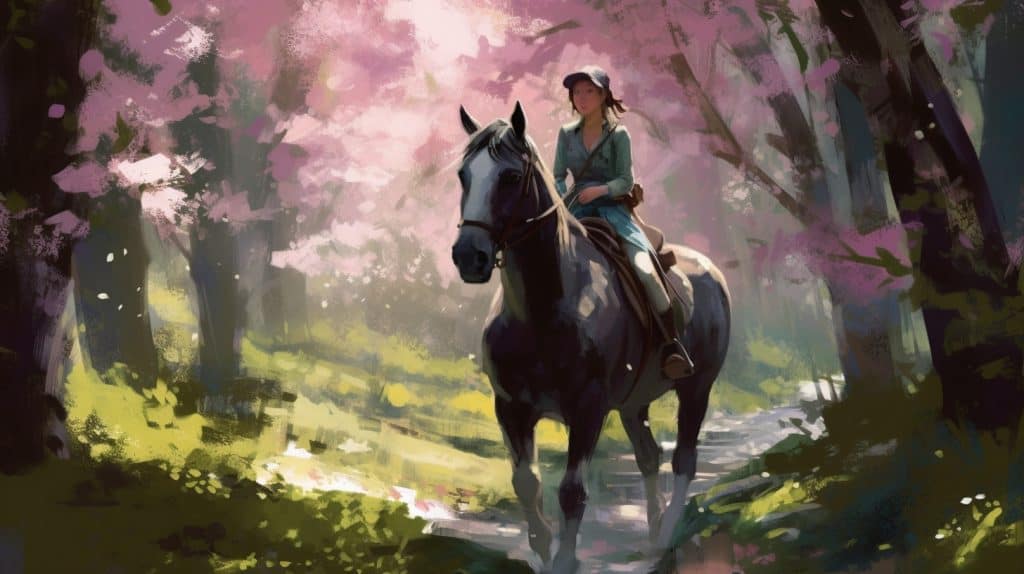
As you gain confidence and experience, you can progress from beginner to intermediate rider, exploring more advanced techniques and riding disciplines.
A. Refining Riding Techniques
Continual improvement and refinement of riding techniques are crucial for advancing your skills as an equestrian.
- Mastering more complex riding movements: Challenge yourself by perfecting advanced movements like lateral movements, leg yield, and shoulder-in.
- Improving your horse’s collection and responsiveness: Work on refining your communication with the horse to achieve enhanced collection, impulsion, and precise responses to your aids.
- Perfecting your overall riding form: Aim for optimal alignment, balance, and flexibility in the saddle, ensuring a harmonious partnership with your horse.
B. Jumping and Trail Riding
Explore the thrilling world of jumping and venture out on scenic trail rides.
and venture out on scenic trail rides.
- Introducing jumping techniques and obstacles: Learn the fundamentals of jumping, including approach, takeoff, and landing techniques. Gradually progress to more complex jumping courses and obstacles.
- Exploring the world of trail riding: Venture into nature on horseback by embarking on trail rides. Develop your skills in navigating various terrains, such as hills, water crossings, and wooded trails.
- Advanced riding skills for different terrains: Adapt your riding techniques to different terrains and riding disciplines, such as cross-country riding and endurance racing.
C. Competitions and Riding Disciplines
For riders seeking a competitive edge, discovering various riding disciplines and preparing for horse shows can be incredibly fulfilling.
- Discovering various riding disciplines: Explore different riding disciplines such as dressage, show jumping, eventing, and Western disciplines like barrel racing or cutting.
- Preparing for competitive horse shows: Learn about the requirements and expectations for each discipline, including rulebooks, dress codes, and competition formats.
- Choosing the right discipline for your interests and goals: Determine your aspirations and select a riding discipline that aligns with your interests, whether the elegance of dressage or the thrill of show jumping.
Maintaining a Strong Partnership: Horse and Rider Bonding
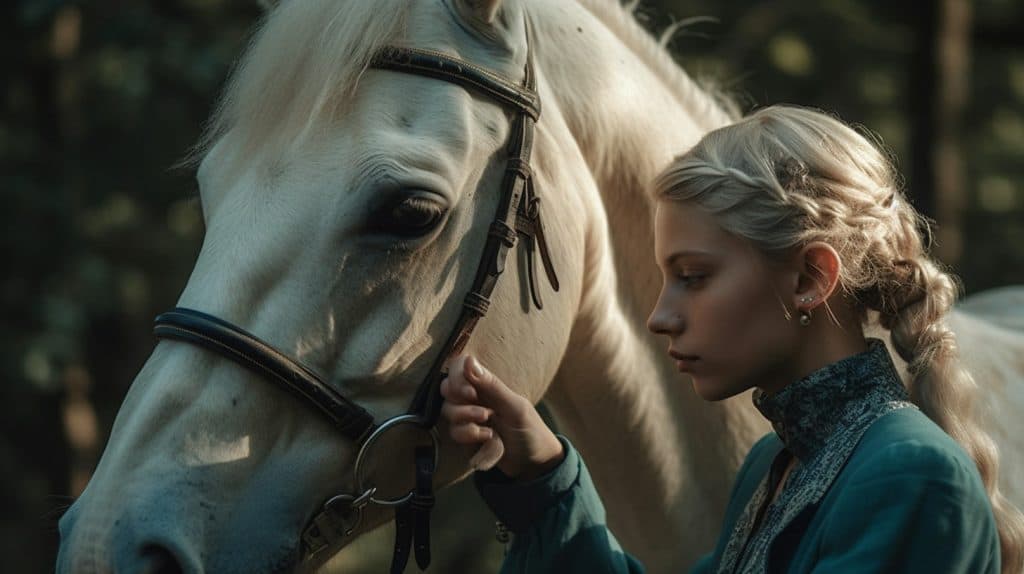
Nurturing a deep connection and bond with your horse is essential for a harmonious and successful partnership.
A. Horse Psychology and Empathy
Understanding a horse’s instincts and behaviour can significantly enhance your relationship and communication.
- Understanding the horse’s instincts and behaviour: Educate yourself on equine psychology, herd dynamics, and natural instincts. This will enable you to better interpret and respond to your horse’s needs.
- Developing a deep connection with your horse: Spend quality time with your horse, engaging in groundwork exercises and bonding activities to establish trust and mutual understanding.
B. Building Trust and Confidence
Building trust and confidence in both yourself and your horse is pivotal for a harmonious and successful partnership.
- Building a strong bond through groundwork exercises: Practice groundwork exercises such as lunging, desensitization, and liberty work to build trust, respect, and clear communication.
- Overcoming fears and building self-assurance as a rider: Address any anxieties or fears you may have through gradual exposure and building confidence with the guidance of an experienced instructor.
- Using positive reinforcement to strengthen the partnership: Employ positive reinforcement techniques, such as praise and rewards, to reinforce desirable behaviors and deepen the bond with your horse.
Riding Etiquette and Sportsmanship
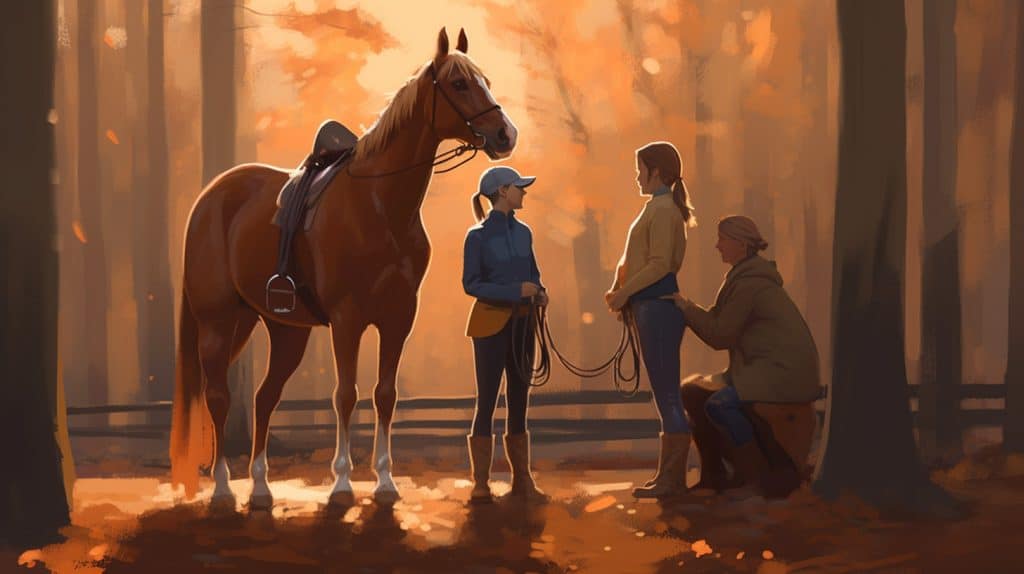
Demonstrating proper etiquette and sportsmanship contribute to creating a safe and inclusive equestrian community.
A. Respect for Horses and Others
Respecting horses and fellow riders is essential in creating a positive and enjoyable riding experience.
- Proper etiquette at the stables and during lessons: Maintain cleanliness in the barn, be considerate of shared spaces, and follow riding school rules and regulations. Treat your fellow riders, instructors, and stable staff with respect.
- Demonstrating good sportsmanship in competitions: Display good sportsmanship by congratulating and supporting your peers, accepting both victories and defeats graciously, and adhering to competition rules and codes of conduct.
B. Caring for Horses
Being a responsible horse owner and caretaker reflects a genuine love and dedication to these magnificent animals.
- Responsible horse ownership tips
 : Ensure your horse receives proper veterinary care, a balanced diet, regular exercise, and a safe and comfortable living environment.
: Ensure your horse receives proper veterinary care, a balanced diet, regular exercise, and a safe and comfortable living environment. - Being a considerate rider and caretaker: Handle horses with kindness, empathy, and patience. Maintain their mental and physical well-being by providing companionship, regular grooming, and opportunities for social interaction.
Summary
Embarking on the journey of learning how to ride a horse opens up a world of adventure, personal growth, and meaningful connections. By establishing a strong foundation, mastering the basics, advancing your skills, and nurturing a deep bond with your horse, you can experience the countless joys and benefits of horseback riding. Always prioritize safety, respect, and empathy, and cherish the lifelong memories and lessons this magnificent journey offers.
Frequently Asked Questions (FAQs)
What is the best age to start learning to ride a horse?
There is no specific age requirement for learning how to ride a horse. Children as young as four can begin with supervised and age-appropriate activities, while adults can start at any age. Riding schools often offer lessons tailored to different age groups and skill levels.
How often should I practice horseback riding to progress quickly?
Frequent practice is key to progressing quickly in horseback riding. Aim to ride at least once or twice a week to build muscle memory, develop riding skills, and maintain a strong connection with your horse. Consistency and regular practice will yield faster improvement.
Can I ride a horse if I have certain physical limitations?
Many individuals with physical limitations can still enjoy horseback riding. It is essential to consult with your physician and an experienced instructor who can assess your abilities and recommend suitable modifications and accommodations. Adaptive riding programs may also be available in your area.
What should I do if my horse becomes agitated or difficult to handle?
If your horse becomes agitated or difficult to handle, remain calm and try to identify the source of their discomfort or stress. Practice relaxation techniques, such as deep breathing, and seek guidance from your instructor or a more experienced rider. Understanding and addressing the horse’s needs can help alleviate their agitation.
How do I choose the right horse for my skill level?
Selecting the right horse depends on your riding ability, goals, and preferences. Work closely with a knowledgeable instructor or equine professional who can assess your skill level and match you with a suitable horse in terms of temperament, training, and experience.
Are there any specific exercises or stretches to improve riding abilities?
Yes, there are various exercises and stretches that can improve your riding abilities. Core exercises, such as planks and Pilates, help develop strength and stability. Yoga and flexibility exercises can enhance suppleness and range of motion. Discussing specific exercises with a fitness professional or riding instructor can further tailor routines to your needs.
How much does horseback riding typically cost?
The cost of horseback riding varies depending on factors such as location, type of lessons, and individual stable rates. On average, group lessons can range from $30 to $60 per hour, while private lessons may cost $60 to $100 per hour. Factors such as horse leasing, show participation and additional services may incur extra costs. It is best to inquire with local stables or riding schools for accurate pricing information.
varies depending on factors such as location, type of lessons, and individual stable rates. On average, group lessons can range from $30 to $60 per hour, while private lessons may cost $60 to $100 per hour. Factors such as horse leasing, show participation and additional services may incur extra costs. It is best to inquire with local stables or riding schools for accurate pricing information.
Read: Top American Style Riding/Western Riding Facts
Recent Posts
Introduction The Vaquero tradition, influenced by Spanish horsemanship, has also left an indelible mark on American horse riding. This tradition emphasizes lightness, precision, and clear...
